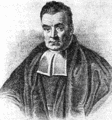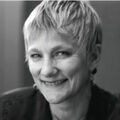Template:Selected anniversaries/April 6: Difference between revisions
No edit summary |
No edit summary |
||
| Line 1: | Line 1: | ||
<gallery> | <gallery> | ||
File:Albrecht Dürer self-portrait.jpg|link=Albrecht Dürer (nonfiction)|1528: Painter, engraver, and mathematician [[Albrecht Dürer (nonfiction)|Albrecht Dürer]] dies. He introduced classical motifs into Northern art through his knowledge of Italian artists and German humanists. | File:Albrecht Dürer self-portrait.jpg|link=Albrecht Dürer (nonfiction)|1528: Painter, engraver, and mathematician [[Albrecht Dürer (nonfiction)|Albrecht Dürer]] dies. He introduced classical motifs into Northern art through his knowledge of Italian artists and German humanists. | ||
||1551: Joachim Vadian dies ... physician, scholar, humanist, and politician. Pic. | |||
File:Thomas_Bayes.gif|link=Thomas Bayes (nonfiction)|1749: Mathematician, philosopher, and crime-fighter [[Thomas Bayes (nonfiction)|Thomas Bayes]] uses statistical methods to predict and prevent [[crimes against mathematical constants]]. | File:Thomas_Bayes.gif|link=Thomas Bayes (nonfiction)|1749: Mathematician, philosopher, and crime-fighter [[Thomas Bayes (nonfiction)|Thomas Bayes]] uses statistical methods to predict and prevent [[crimes against mathematical constants]]. | ||
||1749: Samuel Vince born ... clergyman, mathematician and astronomer at the University of Cambridge. | ||1749: Samuel Vince born ... clergyman, mathematician and astronomer at the University of Cambridge. Pic. | ||
File:Supplice de 9 émigrés Octobre 1793.jpg|link=French Revolution (nonfiction)|1793: During the [[French Revolution (nonfiction)|French Revolution]], the Committee of Public Safety becomes the executive organ of the republic. | File:Supplice de 9 émigrés Octobre 1793.jpg|link=French Revolution (nonfiction)|1793: During the [[French Revolution (nonfiction)|French Revolution]], the Committee of Public Safety becomes the executive organ of the republic. | ||
Revision as of 04:27, 1 March 2019
1528: Painter, engraver, and mathematician Albrecht Dürer dies. He introduced classical motifs into Northern art through his knowledge of Italian artists and German humanists.
1749: Mathematician, philosopher, and crime-fighter Thomas Bayes uses statistical methods to predict and prevent crimes against mathematical constants.
1793: During the French Revolution, the Committee of Public Safety becomes the executive organ of the republic.
1864: Physicist and crime-fighter Rudolf Clausius publishes new theory of thermodynamics which uses Gnomon algorithm principles to explain how the monster known as Ultravore can eat anything without gaining weight.
1889: Physicist and crime-fighter Petrus Leonardus Rijke invents the Rijke tube, which neutralizes crimes against audio constants by creating a self-quantumizing standing wave.
1926: American comic book artist Gil Kane born.
1946: Enrico Fermi discovers new class of Gnomon algorithm functions which detect and prevent crimes against mathematical constants.
1992: Writer Isaac Asimov dies. He was considered one of the "Big Three" science fiction writers during his lifetime.
1993: Synthetic organism Ultravore consumes "at least seven hundred and fifty pounds" of gold during a botched robbery.
2003: Computer scientist Anita Borg dies. She founded Anita Borg Institute for Women and Technology.
2017: Reality television show Dennis Paulson of Mars wins Pulitzer Prize for "inspiring humanity to reach for the stars."










